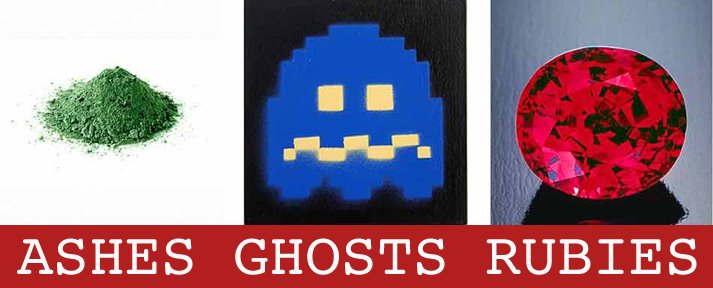What is the working title of the
book?
Since I was tagged by Jenn McCreary,
I will refer to the chapbook Allsorts, which will be published by her &
Chris McCreary’s very own Ixnay Press later this spring. I also have another book, 29 Cheeseburgers
+ 39 Years coming out from Pressed Wafer very soon, but to simplify things I
will talk about the former since this is a self-interview and I am easily
confused.
Where did the idea come from for the
book?
I was participating in the National
Poetry Writing Month (NaPoWriMo) activity started by Maureen Thorson in which
one writes a poem each day during the month of April. The most effective way, for me, to approach such a project
is by way of some kind of overarching project or idea. I found myself at a bit of a loss in
April, 2012. There was a dish of
liquorice allsorts on my desk, which I keep there more because I am attracted
to their aesthetic appearance of primary colors and shapes moreso than any
habit of actually eating them; although, at times, I do. I decided that I would write some poems
mimicking the formal characteristics of the candies to give myself a catalyst
for the project. This resulted in
the creation of several forms whereby lines are repeated in the same intervals
as they are in the striped candies, a kind of round-ish center-justified stanza
with a break in subject and tone in the “middle,” and more free-form clouds to
correspond with the nonpareil-like candies that are just a mass of little
spheres. It is a bizarre conceit,
but I had a good time with it and was pleased by the poems. I did about 13 of these, and then
switched to other types of poems, though over the course of the month certain
thematic elements remained. I then
grouped all of these poems together under the title Allsorts.
What genre does your book fall under?
It’s lyric poetry.
What actors would you choose to play
the part of your characters in a movie rendition?
There really aren’t very many human
characters in the book. There are
some robots, a dying finch, various anonymous crowds, a girl on a skateboard in
Warsaw, Poland, the musician Cynthia Dall, who died in April of last year, some
blue devils, and myself as Captain Atom.
I suppose the girl on the skateboard and Cynthia Dall could be played by
the same person. It would have to
be someone attractive who could sing.
Maybe Zooey Deschanel, because she's the only actress like that I can think of right now. I,
of course, would be played by Tilda Swinton.
What is the one sentence synopsis of
your book?
The only thing harder than living is
dying.
How long did it take you to write the
first draft of the manuscript?
Most of it was written during April,
2012, although there are a few poems from other times during that year.
Who or what inspired you to write
this book?
There are numerous attributions in
the poems, there’s Su T’ung Po, David Bowie (the songs “The Subterraneans,” and
“Warszawa” from “Low”), my friend the photographer Lissa Rivera’s “Absence Portraits,” the band Tindersicks (the song “Can We Start Again?”), the band
Portishead (the song “Mysterons”), the poet Sandra Simonds, Ian Curtis and Joy
Division (the song “Warsaw”), W. B. Yeats’ “The Stolen Child,” the
aforementioned Cynthia Dall and the John Coltrane Quartet’s “Sun Ship.” Less directly there’s Frédéric Chopin &
the city of Warsaw, Flushing Meadows Park and Utopia Parkway in Queens, DC
comics characters and yoga.
What else about your book might pique
the reader’s interest?
If none of the stuff I’ve mentioned
moves you, then I’m afraid I haven’t got much else. The book is about death, mostly, so I think it should be
accessible to most mortals.
Will your book be self-published or
represented by an agency?
It will be published by Ixnay Press.
My tagged
writers for next Wednesday
are:
MaureenThorson
Patrick Doud
Chris McCreary
Lina ramonaVitkauskas
Mark Wallace













